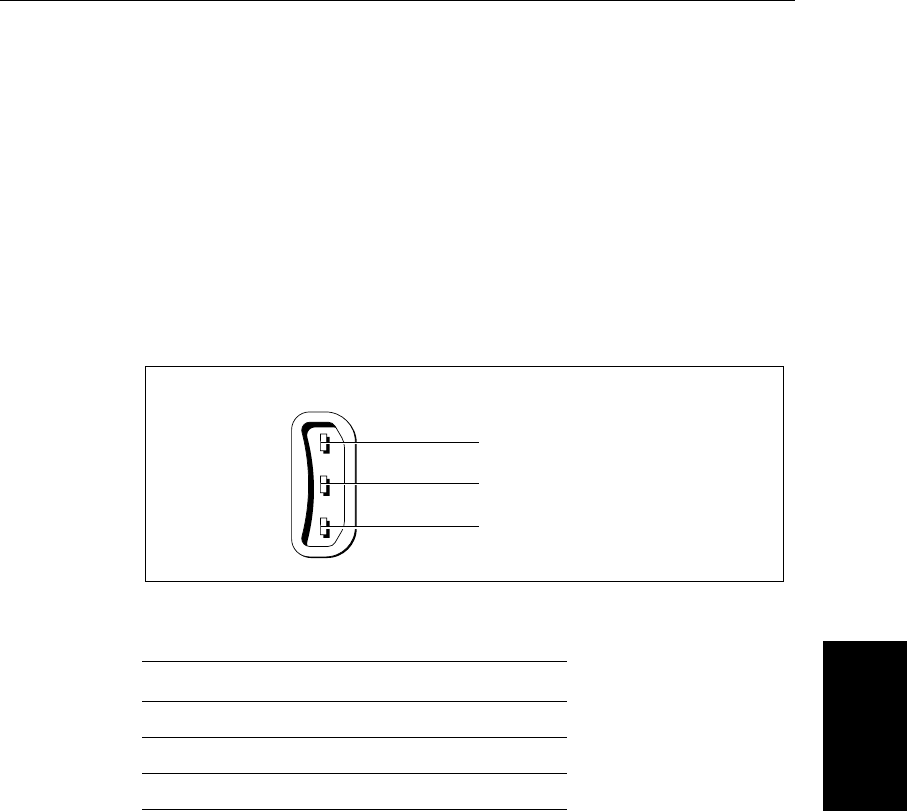
Chapter 6: Installation 6-19
SeaTalk® and NMEA
In
SeaTalk is a precise, high-speed, bi-directional protocol which is flexible
enough to adapt to any number of instruments, without a central processor.
SeaTalk equipment can also communicate with non-SeaTalk equipment via
the NMEA standard.
SeaTalk Connection
SeaTalk data, if present, is the primary source for all navigational data except
heading.
The SeaTalk input/output should be connected at the rear SeaTalk 3-pin
connector. This appears as follows, when viewed from outside:
Figure 6-10: SeaTalk Connector
Note:
1. Ifyou usethe SeaTalkconnector youmustfit the supplied ferrite tothecable
for EMC CE conformance. The ferrite must be clipped to the cable as close to
the connector as possible.
2.The displaydoesnot supply12 Vvia the SeaTalkconnector,neitherdoes the
SeaTalk connector require 12 V to operate.
12 V is required for other SeaTalk units.
3. If you are connecting an active compass, the NMEA input has priority. You
should, therefore use an NMEA input channel (see Power and NMEA Input
Connection) rather than theSeaTalk interface, unless the compass only has a
SeaTalk output.
To connect the display unit to the SeaTalk bus, connect a standard SeaTalk
cable between the SeaTalk connector on the rear of the display and a SeaTalk
instrument or the SeaTalk bus.
Table 6-4: Sea Talk Connections
Pin No. Function Color
1 +12 V Red
20 VShield
3 Data Yellow
1. Red (No internal connection)
2. Screen (0V)
3. Yellow (Data)
SeaTalk In/Out
D3232-3


















